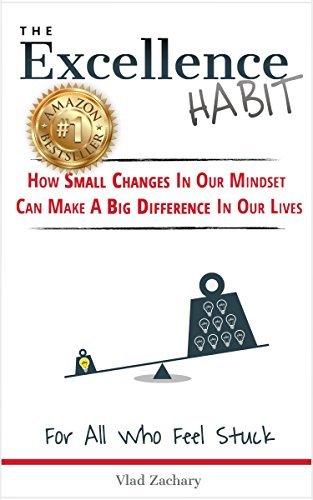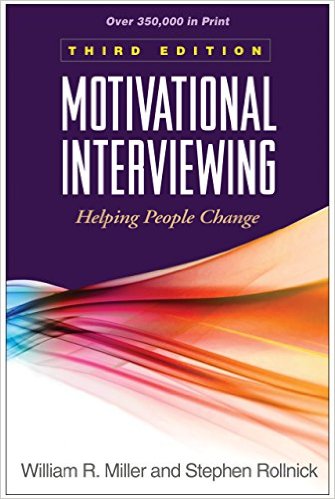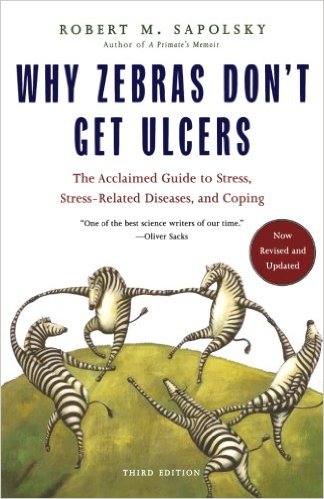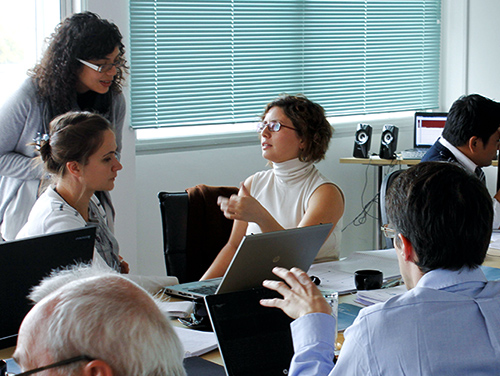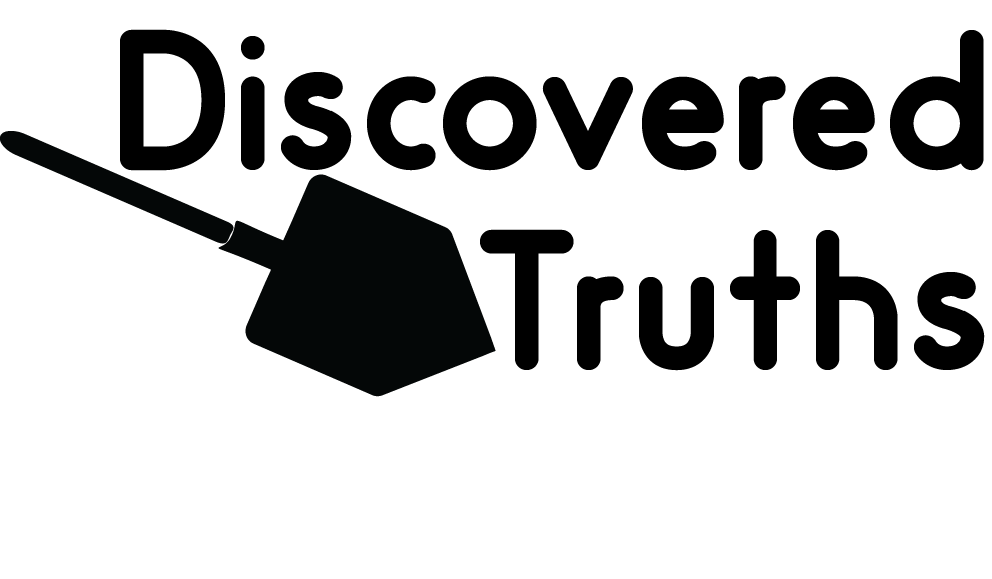Robert Bogue
January 2, 2017
1 Comment
While working on a community project to help teens who are struggling with life, I had the pleasure of talking to some real professionals who work with teens every day, and one of them shared one of his techniques for having dialogues with teens in trouble. That technique was motivational interviewing. I picked it up and started reading Motivational Interviewing: Helping People Change, and realized that it addressed some of the challenges that I’ve seen in my work with my children as well as conversations with other adults.
Spirit and Attitude
In many therapeutic relationships, there’s an expectation. The expectation is that the person being consulted has the answers to the questions that are plaguing the seeker. The idea is that the expert in the situation is the one with more training, more degrees, more experience, etc.. However, this expectation directly faces the reality that every human is unique, different, and special. The seeker is the one who knows their life best. They may be missing the knowledge or support to improve their life, but they are the undisputed experts in their own life – and in their condition.
This is the fundamental shift in perspective that sits at the heart of motivational interviewing – that is that the relationship is not a one-up/one-down, where the one being consulted is the expert and the seeker is the novice. (See Compelled to Control for more on one-up/one-down.) Instead, there are two people who are coming alongside one another for the betterment of both. The seeker is looking for specific growth and the one being consulted can be enriched by the seeker’s experience in their own life.
The Heart and Soul of Change cited therapist alliance to be the most powerful factor that influenced outcomes. This is the idea that both the therapist and the patient have the same goal. This is the spirit of motivational interviewing – that the seeker (patient) has the same perspective as the therapist (consulted). Drawing on this powerful truth, motivational interviewing can move people from places of resistance, ambivalence, and into a place of willing change.
Change Models
When you’re focused on changing people, whether to get them to stop a bad habit or start a healthy one – or ideally both – there are several different models that can be used. There is Kurt Lewin’s model of unfreezing, changing, and refreezing, as well as the stages of change model, which speaks of precontemplation, contemplation, preparation, action, and maintenance. Precontemplation maps to Lewin’s unfreezing – that is, becoming ready to consider change. Lewin’s change is broken into contemplation, preparation, and action in stages of change. Maintenance maps to refreezing in Lewin’s model.
Of course, there are other models, like John Kotter’s model for organizational change. (See Leading Change and The Heart of Change
for more on Kotter’s model.) There are other approaches, like the idea of New Year’s Resolutions, that you may find helpful. (You can see my post Keeping Your New Year’s Resolutions for more.) Motivational interviewing follows the stages of change model and recognizes that people are in different places in their walk towards change.
In my experience, an awareness of the journey of change is something that distinguishes motivational interviewing. Instead of just blindly assuming once someone has the knowledge of what to do that they’ll magically make it happen, motivational interviewing recognizes the complexity of the change process.
The process of personal change is much like the process for adopting an innovation. Diffusion of Innovations shared that there is a hierarchy to adopting an innovation (or change):
- Knowledge – Awareness of the innovation or change which can be gained from mass media
- Attitude – A change in perspective about the innovation or change typically garnered from close associates or friends.
- Practices – Making the change is a personal decision.
This is the same process; you can hardly make a change until you’re aware of it and until you accept that the idea is a good one. If you want to address recidivism rates, you must get past the inmate understanding the law – in most cases they do. You must get to the heart of their attitudes about the law, being law-abiding, or how their status would be impacted by doing the right thing. This precedes the decision to make the change.
The Motivational Interviewing Process
Motivational interviewing relies on a set of skills that are important to cultivate (which I’ll address later in this review) but there’s a process for doing motivational interviewing. However, this isn’t a strict process, but is instead a flow, like waves that are continuously lapping the shoreline of the relationship. Some of these waves are large and take a long time to return to the ocean and others barely make a mark. The process isn’t intended to be a strict linear process with achievements at each step like they’re levels in a game. Instead they’re pieces of an overall process to lead people to the lives they want to have. It’s recursive and reflexive, happening repeatedly.
The four components of the motivational interviewing process are:
- Engaging – Developing a rapport, or what The Heart and Soul of Change would call a therapeutic alliance. More simply, building a relationship.
- Focusing – Guiding towards a specific, achievable goal.
- Evoking – Fanning the flames of desire to make the change.
- Planning – Developing the set of specific action steps.
Let’s look each of these components in the following sections.
Engaging in the Relationship
In any work, the first step is to build into the relationship with the other person. Sometimes that work is quick and easy, because the other person needs only to perform a transaction with you; but when you’re helping them shape, change, or redirect their lives, the need to build a relationship is key. So while a McDonald’s worker may solidify their relationship with you with the simple phrase, “What can I get you today?”, someone who is intent on helping another human grow needs to do more to build trust and safety. (See my post Trust => Vulnerability => Intimacy for more.)
It was Theodore Roosevelt who said, “People don’t care how much you know until they know how much you care.” Until they know that you care about them as a person, they don’t care about your degrees, experience, techniques, or tools. They care when they know that you have their best interests at heart.
There are many pitfalls on the way to building relationships. Some of these traps were covered specifically.
The Traps
Despite the best intentions to hold to the spirit of peers in a discovery process to help the seeker, there are traps laid out which can derail the conversation into the authoritarian, one-up/one-down situation, where the situation is no longer collaborative.
- The Assessment Trap – The belief that we need to know a lot of information before we can begin to help (and add value).
- The Expert Trap – The expert, professional, or volunteer knows the right answers and they need to impart it on the client.
- The Premature Focus Trap – Beginning to work on a problem before you develop a relationship or understanding of perspective.
- The Labeling Trap – Assigning a label to someone and assuming they are that label – not that it is an aspect of them – or maybe it’s wrong and it’s not even that.
- The Blaming Trap – Falling into the game of finding the fault and assigning the blame to someone – either the client or someone in their world.
- The Chat Trap – Instead of working through a guiding process, just talking with no direction or intent.
The good news is that escaping the traps is nearly as simple as being aware of the traps’ existence – in the moment – and acknowledging it. In this way, it’s like the boxes from The Anatomy of Peace but easier. Boxes are hard to recognize that you’re in — but these traps are easier to see.
Listening
Listening to another person might seem to be an obvious and easy thing that one can do to build relationships, but in truth most people are crummy at listening. We’re distracted by our devices, we don’t make enough eye contact, and we are generally distracted by our own thoughts, instead of giving the person that we’re listening to our full attention.
The basics of listening seem obvious. We remove the distractions that prevent us from paying full attention to the other person. The way that we communicate that we’re paying full attention to them is by making and maintaining eye contact. It’s not necessary to maintain 100% eye contact – in fact, the other person is unlikely to let you. However, giving the other person the opportunity for a large amount of eye contact is important. They then can take – or leave – as much eye contact as they feel comfortable with.
There are techniques for reflective listening, including simple and complex reflections, as well as strategies to lead the conversation so that the person will elaborate on how they feel and you have ways to check your understanding. I’ll discuss that later, but in the elicitation stage, there’s a more important set of constraints that can make or break the relationship.
Non-Reactive
The first constraint is that your listening should be non-reactive. That isn’t to say that if the seeker asked if you’re, excited you can’t respond with a yes, or that you should appear to be only barely conscious. Instead, it means that when people share something vulnerable with you, that you shouldn’t indicate a great deal of surprise as if your opinion of them has changed. For folks to build trust in you and to become vulnerable with you, they must feel safe. (See my post Trust => Vulnerability => Intimacy for more on building trust.)
Non-Judgmental
The second constraint is related. You cannot appear judgmental in your responses. This leads to the one-up/one-down perspective or The Expert Trap – both mentioned above. But more importantly, it reduces the feeling of safety necessary for someone to move further into the relationship. If you respond in a judgmental manner, the seeker will learn that they need to defend themselves. They’ll perceive that you’re not a safe person and that isn’t a good way to develop a relationship.
Finding Focus
Sometimes the context of the interaction will drive the focus for the engagement. Say the seeker approaches the consulted party in the context of therapy for addiction. Sometimes the context won’t help to focus the interaction at all. Now consider a seeker walking into the office of the pastor of a church. In this case, the context doesn’t prescribe the kind of focus that the conversation will have. Even in the first case, knowing that someone has an addiction doesn’t indicate their desire to change their behavior – as the seeker may be fulfilling the requirement of a third party, like a spouse or a judge.
Whether there is a clear focus at the start or not, in order to be intentionally helpful, it’s necessary to understand what the objective is for the interaction. This is the reason that there is a focusing phase to motivational interviewing to develop and agree to a common objective.
Planning Possibilities
The seeker entering the arena of the consulted can come with four basic situations:
- Clear Direction – The seeker knows exactly (or nearly exactly) what they want to accomplish in their lives and is looking for the consulted to help guide them toward that path.
- Multiple Choices – The seeker sees multiple options for how they could proceed to fix one area of their life; but it’s unclear exactly which change they should make, and are first looking for the consulted to help them determine which they should work on first.
- No Clear Direction – In many non-acute settings, the seeker doesn’t have a clear vision of what they want to improve in their life, nor clear directions they could take to improve it. In these cases, the consulted and the seeker need to collaboratively define what the options even are before seeking to focus on one.
- No Therapeutic Direction – The fourth case, which is a variant of no clear direction, is where there is no clear direction and the consulted doesn’t see a therapeutic direction. There’s no reason to encourage one behavior or another. In these cases, the consulted need not advocate any direction.
When the seeker has a clear direction, the planning process is very short. Essentially planning becomes a simple confirmation. With those with multiple choices, the planning process is relatively short, as one of the options is selected from the list. Planning gets longer when there aren’t a predefined set of options for direction, and even longer still when the consulted person has no specific therapeutic direction to provide.
In those cases, where one needs to determine directions or identify potential directions to be selected from, sometimes the best thing for the person being consulted to do is to practice a bit of selective reflection.
Evoking the Desire for Change
It’s 1955 and we’re listening as Dr. Raphael Level, the founder of the Global Medicine Forum, speaks. His words are as startling then as they are now: “A relatively small percentage of the population consumes the vast majority of the health care budget for diseases that are very well known and, by and large, behavioral.” He continues, “Many articles demonstrated that eighty percent of the health care budget was consumed by five behavioral issues.” He didn’t name the issues, but too much smoking, drinking, eating, stress, and too little exercise are the presumed list. (Much of this story comes from Change or Die.)
The funny thing is that he could have been speaking last week. In the over sixty years between his speech and today, little has changed. Perhaps we could shuffle the five and maybe swap out smoking and drinking for addictions in general – but fundamentally the situation hasn’t changed. The greatest challenges that we have in medicine isn’t medicine. The greatest issues we have in medicine are human behavior.
If you want to scare yourself, go look at the World Health Organization’s (WHO) reports on global handwashing rates in acute care settings. No one is missing the knowledge that handwashing prevents infections since Ignaz Semmelweis made his discovery. Yet global handwashing compliance in acute care is at a 20% level. In the US, you might get between 50%-80%. We’re not talking about a lack of soap. (See Diffusion of Innovations if you want an interesting story about how the availability of soap changed outcomes.) However, we’re not talking about an availability problem. We’re talking about a behavior problem.
How then does motivational interviewing accomplish the sorts of behavior changes that we’ve been unable to accomplish as a society? The answer is that, rather than demanding change, it relies on gently guiding the seeker into their desire to change through increasing engagement and reducing disengagement.
Increasing Engagement
In a formal debate the parties are assigned their sides and they square off. Everything that one party says, the other side refutes. That’s the way the debate works. You seek to minimize what the other party says and maximize the impact of your statements, even to the point of hyperbole. This is the way the situation is structured. Unfortunately, even if we don’t formally get assigned sides, the roles of the seeker and the consulted in traditional therapy would square off, with one suggesting change and the other suggesting status quo. The first tool to encourage a change is selected reflection of what the seeker is saying.
Selective Reflection
Motivational interviewing grew out of Carl Roger’s work, and he commented that he didn’t direct his patients. However, upon review of his work, one of his students could demonstrate that, while he didn’t overtly provide direction, he was differentially reflecting certain comments and allowing others to pass by. By selectively reflecting comments, Rogers influenced the thinking of his patients without directly expressing his opinion on what they should do.
Choosing what to reflect and how to reflect what the patient – or seeker – is saying can provide them significant support in pursuing the direction that the therapist – or consulted – believes is best. By simply choosing to provide affirming reflections around certain paths and not making comments on others, it’s possible to subtly shift the path of the seeker without them even realizing it’s happening.
Righting Reflex
It’s more common for the consulted to desire to set the seeker straight. That is, to tell them how they’re wrong or what they “must” do. This invites the seeker to defend their position. Because we learn about our perspectives by the way we talk, we’re unintentionally creating additional resistance as we ask folks to defend their position. Therefore, those being consulted need to carefully ask for permission before providing information (or judgement) on the seekers’ situation. The consulted party isn’t imbued with unrestricted power to inflict their thinking on the seeker. Instead, they’re granted the opportunity to petition to get their thoughts into the mind of the seeker.
Staying Behind the Person
My friend Bill Caskey taught me a long time ago to stay behind the prospect when selling. The idea is that if the client says that the solution you’re proposing is great, respond slightly behind them. The idea is that they’ll try to continue selling you that your solution is great. Obviously, this is a skill that needs a bit of finesse; however, done well, it further reinforces the buyer’s perception of your product or solution.
In motivational interviewing, staying behind the seeker causes them to talk more about the reasons for the change. The more they talk about the change, the more likely they are to do the change because we learn our beliefs as we talk them out. Specifically, we become more aware of our desire as we start to discuss it.
Change Talk
The kind of talking that a seeker does exposes their interest in the change process and ultimately their chances for success. As seekers can articulate their reasons for changing, including its importance and what they expect to get, they are more likely to be successful in changing their world. Specifically, there are five factors that can influence the probability of success:
- Desires or Goals – Being able to articulate the objective is important because, as the saying goes, “If you don’t know where you’re going than any road will take you.”
- Importance – Understanding why the change is important or essential provides the energy to compel the seeker into action.
- Positivity – Generally, experiencing the change process in a more positive way will support continuing effort at the changed. If the seeker sees hunger as a signal rather than a pain, they are more likely to be successful.
- Expectations – Knowing how to set realistic expectations and knowing what you expect helps to remove barriers to the change.
- Hope – The seeker’s sense of hopefulness about the change can carry them through when setbacks occur. (See The Psychology of Hope for more about hope.)
Obviously, the objective is to encourage the seeker to have more of these positive factors for change. However, sometimes it’s not entirely possible.
Addressing Ambivalence
Ambivalence is the not the land where there is no motivation in either direction. Ambivalence is the land where there’s not compelling pull towards or away from the behavior change. This is the place where either the forces are both low – or they’re both high and are tugging at the heart strings of the seeker. It’s like brackish water, water between the ocean and freshwater sources: the currents can be strong or they can be nearly non-existent.
Ambivalence occurs when there’s insufficient energy in the psychodynamic system to have “stay the same” displace “change”, or vice-versa. In my review of Inside Jokes, I mentioned that jokes work because of a conflict of ideas, which isn’t quietly filed way but is instead either cooperatively or more frequently uncooperatively resolved. That is, the ideas either become aligned because of new insight or one forces the other out. Getting out of ambivalence requires the energy to have one idea force the other idea out – ideally for good.
Building strength in the argument for change so that it can overwhelm the status quo is the point of motivational interviewing, but increasing the force of the change argument isn’t enough. Often it’s necessary to dissolve the disengagement (reduce the resistance).
Dissolving Disengagement
It can be that the person feels caught between two worlds. They are trapped in their current thinking and destructive behaviors, unable to climb out of the pit. In this view, the person needs the “waypower” component of hope (see The Psychology of Hope) to know how to accomplish the change. This is every consulted person’s dream. All they must do is impart the knowledge of how to do the change and it will happen. Except, as we have discussed, this isn’t the state that most people arrive in. Most seekers come with a fair amount of disengagement and resistance to the process – sometimes to seeking (they’ve been told to come), and frequently with the situation itself.
We know that egos have defensive techniques that allow us to walk through our days instead of curling up in a ball in fear of the impending asteroid that’s hurling towards the planet. (See Change or Die for more about our ego.) It’s these defenses that we’re seeking to reduce. We’re trying to prevent the minimization of the damage caused to ourselves and others by our existing behaviors and responses. We’re trying to hold up the mirror to ensure that people can see themselves more clearly. (See Incognito for more on how we deceive ourselves.)
Behavior-Values Gap
We talk the talk but can we walk the walk? We can have espoused beliefs that sound good but aren’t how we act. This is less episodic and subtler than the boxes that The Anatomy of Peace was speaking about. In that case, we’re situationally triggered towards behaving inconsistent with our ideas. The gap between our values and our behaviors is much more persistent than that. (See The Fifth Discipline, The Happiness Hypothesis and Dialogue for more on the gap between our espoused beliefs and what we do.)
The gap is a natural artifact in human beings. Even students in seminary school will miss the proverbial Good Samaritan test, as demonstrated by Darley and Batson in their research study, “From Jerusalem to Jericho” published in 1973. Students pressed for time were substantially less likely to help someone who they perceived needed their help.
Milgram demonstrated the startling ease with which most people could be manipulated into delivering what they believed were lethal shocks. (See Mistakes Were Made (but Not by Me) for more.) It’s not that there was a question about whether the subjects valued human life – the question is what psychological pressure they were willing to confront to protect those values.
Closing the Gap
The simple – too simple – answer for closing the behavior-values gap is to hold a mirror to the face of the seeker. To show them how their espoused values and their behaviors are in conflict. The Outward Mindset told a story where Ivan’s father saw his own violent behavior when Ivan copied it, thereby revealing his own behaviors and causing an immediate and permanent change. While holding the mirror up for someone to see can be an effective and permanent way of creating a change, it’s also risky, as the response of breaking the proverbial mirror or running away are very real responses.
The confrontational style isn’t what motivational interviewing is about. It’s about allowing the seeker themselves to hold up their own mirror and hopefully not be so scared by what they see that they drop it. Getting folks to raise the mirror and turn it towards themselves is the beauty of motivational interviewing done well.
Planning
By the time you reach the planning phase of motivational interviewing, the hard work is done. The planning exercise is important so that your hard work in the previous phases doesn’t get undone because of poor planning.
Way Power
Planning is specifically developing waypower in the mind of the seeker. That is, you’re helping them discover that they do have the capacity, ability, and skills necessary to make the change. You’re helping them feel safe in their decision to change, because they will be successful through their capabilities and the capabilities of the relationships around them, including their close relationships as well as the communities that they are a part of. (See High Orbit – Respecting Grieving for more about circles of influence.)
Baby Steps
The easiest way to make any change is to convert large, seemingly insurmountable challenges into a set of small steps. The more you can create a set of reasonable steps that a person can take to reach a goal, the less daunting and therefore more doable it becomes. Every change should be wrapped in the cloak of actionability.
If someone needs to exercise more, you don’t start with exercising five days a week for an hour at a time. The first step might be to get running shoes and workout clothes. The next might be selecting a gym to become a member of. The next step might be a 30-minute workout once a week. Each step moves you towards the goal – but isn’t so large that it’s not manageable. I wanted to start eating healthier. I switched from white to wheat bread. It was a small change and it was something that I can do.
Interpersonal Influence
Before sharing some of the specific techniques and approaches that are discussed in motivational interviewing, it’s worth pausing and talking about governing principles for the use of these skills. Here, motivational interviewing defers to Principles of Biomedical Ethics in four broad categories:
- Nonmaleficence – Not inflicting intentional harm.
- Beneficence – The desire and belief of doing good
- Autonomy – The belief in human freedom and dignity
- Justice – Genuine respect for people
These ethics are necessary since the approach can be powerful and can easily be abused to coerce people without their knowledge.
Manipulation
I pause here to talk briefly about manipulation, because as a word it’s gotten a negative connotation. However, if I were to tell you that all of us have been manipulated, you might passionately argue the point that you’re beyond manipulation. However, nearly everyone wears seatbelts in cars. One could argue against the practice, but the truth is we’ve all been manipulated into this behavior based on laws.
This – but not all – manipulation is a good thing. It saves countless lives each year as injuries and death due to automobile accidents are lowered. Manipulation in and of itself is not a bad thing – manipulation which places the benefits of the person doing the manipulation above the benefits of the person who is being manipulated can be a bad thing.
Techniques
There are some practical techniques and approaches which are indicators that motivational interviewing is being used, and the assessment of these techniques can reveal whether the practitioner is following the guidelines that motivational interviewing sets forward. Here are some of the key techniques in the system.
Reflective and Active Listening
Motivational interviewing uses the language of reflective listening rather than the more popular active listening. It does so in part because there’s a distinction that’s raised even inside of reflective listening. There are simple reflections, those which don’t provide much interpretation of what the seeker said. There are also more complex reflections, which process the information to try to make sense of it. These reflections are termed as being more complex.
There are good examples of reflective listening which is at the heart of motivational interviewing, but perhaps my favorite quote for reflective listening, which I discovered in Emotional Intelligence, comes from Haim Ginott: “When you did X, it made me feel Y, and I’d rather you did Z instead.” I change the language a bit to, “When you did X, I felt Y, and I’d rather you did Z instead,” because I don’t believe that others can make us feel anything – I think we choose our own feelings. (See Choice Theory for more.)
DARN
DARN is a way of viewing the seeker’s chances for making a successful change. This is their preparatory talk to ready themselves for the change. The more that you can get a seeker to verbalize in these four categories, the more likely they are to ultimately be successful with their change effort.
- Desire – The root is obviously the desire to make the change in the first place. Without desire, nothing happens.
- Ability – The seeker needs to believe they can make the change. This may be very practical in terms of the specific behaviors or more generally in their belief of their ability to stick to the change.
- Reasons – Having clear reasons for the change, not just broad ideals, will make them more likely to stick with the change when there are setbacks.
- Need – The urgent reason to get started. The specific impetus for change now.
These are the kinds of language that you need to hear from someone as they are preparing for the change. However, it’s the CATs language that will help sustain them through the change itself.
CATs
CATs are the language of commitment. They’re the language when the decision has been made that there are no more questions about a course of action. The CATs are:
- Commitment – This is the signal of the likelihood of action. The change is now.
- Activation – Signals of a willingness – but not commitment – to act.
- Taking Steps – Actual behaviors that demonstrate progress in a direction. These aren’t crossing the goal, only moving in that direction.
This language is the language on the other side of the hill from motivating the person to do the change.
OARS
OARS are what drives the boat of motivational interviewing forward. They are the core techniques that help the seekers respond in a way consistent with their desires.
- Open Questions – Questions that are designed to elicit long responses rather than short ones begin the process of getting the person talking and getting the ball rolling.
- Affirming – Affirming the person helps to build positive affect and allows for the development of a relationship through safe and trusted interactions.
- Reflecting – We all seek to be understood, and reflective listening allows the seeker to know that at some level they were understood. If they aren’t understood well enough they can refine that understanding.
- Summarizing – Putting things all together helps to tie a bow around the package of the conversation or part of the conversation. It affirms that you understand not just the individual statements but the overall picture as well.
These tend to become a rhythm for folks who are providing therapy, like the steady beat of hooves on a path when a horse is walking. Still, in this there’s no room for addition of information – that’s what the elicit-provide-elicit technique does.
Elicit-Provide-Elicit
If everything is reflective listening, then there’s no opportunity for the consulted to share their experience with the seeker. This is obviously not the point. Neither is it right for the consulted to download their view of the world on the seeker. The elicit-provide-elicit sequence was designed to create a safe structure for sharing that doesn’t cause the seeker to feel unsafe (and therefore defend themselves).
The sequence starts by the consulted asking the seeker’s permission to share. This is the first elicit. It’s very rare for the seeker to say no unless there is serious damage to the relationship; so while it may feel as if you’re asking to get told no, you’re asking to increase the willingness of the seeker to accept your feedback.
During the provide step, the consulted provides a little bit of information, just enough to get the point across, and then stops and launches into the final elicit step, which is checking to see if the seeker is still OK or needs additional information. This final elicit step.
By packaging the information you provide in this sequence, you reduce the chances that someone will resist the information.
Getting Motivated
While not everyone is in a counseling situation, all of us interact with others who are stuck, confused as to which direction to go in, and conflicted. Maybe we can pick up some skills for Motivational Interviewing
and help someone else find their way – or maybe we can find out more about ourselves.
